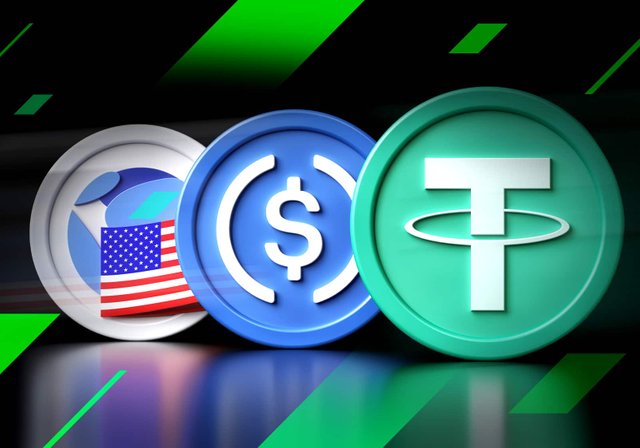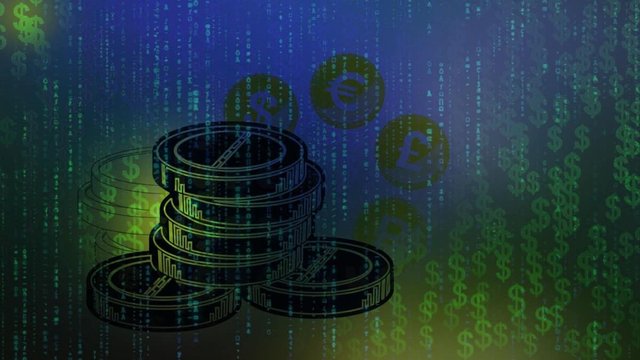
What is a Stablecoin?
The global financial market is extremely volatile nowadays. Stablecoins, as a type of cryptocurrency, are increasingly attracting investors as an alternative to traditional assets.
So, what is a stablecoin, how is it regulated and what are the types of stablecoins? We’ll figure that out together.
Stablecoin meaning
Stablecoin definition:
A stablecoin is a cryptocurrency that has collateral.
The collateral is often fiat currency (e.g., the US dollar, euro or pound sterling) and gold. Stablecoins can also be pegged to other physical assets, such as precious metals, natural resources, securities, real estate and more. Apart from the fiat-collateralised stablecoins, there are also stablecoins that are backed by other cryptocurrencies or that have collateral in the form of complex algorithmic functions.
Stablecoins regulation
Cryptocurrencies were created as a regulatory-free alternative to national currencies. However, recently, they have become the subject of scrutiny by regulators all over the world.
The authorities of many countries recognise a threat in the growth of the stablecoin market. If it happens, America and other countries may face the problem of a ‘Wild West’ of banking, which US banks had already experienced in the nation’s history when banks issued a large amount of unsecured assets. The authorities are concerned that a similar situation could repeat with stablecoins.
There’s also another risk according to the authorities: stablecoin independence. Any financial instrument may pose a certain threat to a country's monetary policy if that instrument is not controlled by the country’s regulators. In other words, authorities don’t like it when residents prefer the assets of private companies to the national currency.
Regulators also fear that cryptocurrencies can be used for money laundering.
As a result, the US plans to regulate stablecoins as follows: only insured depository institutions will be allowed to issue this cryptocurrency. They will be subject to strict banking regulations with quantitative requirements imposed on their capital and liquidity.
The European Council is considering compulsory licensing of cryptocurrency service providers and imposing capital requirements. In addition, they plan to limit the average number of transactions per token in the EU market.
China has imposed a complete ban on any cryptocurrency transactions at all. It has declared mining and any cryptocurrency transactions, including those on foreign exchanges, to be illegal financial activities.
Interest in stablecoins
Because stablecoins are a collateralised type of cryptocurrency, they are not subject to extreme volatility. As such, their exchange rate does not fluctuate much. Stablecoins will not bring huge profits in a flash, but they also won’t bankrupt their owners overnight, either. So, investing in such currencies makes sense.
Owners of some stablecoins can use them for medium- and long-term investments and earn money with potentially lower risk. Holders can profit by staking stablecoins in their wallets for a certain period, for example for six months. In return, they will be paid a certain amount of interest.
Traders can also use stablecoins as a safe haven to weather financial storms and receive a stable return in the meantime. Having made a successful transaction with high-risk crypto, a trader needs to invest the proceeds somewhere. Withdrawing funds to fiat currencies (dollars, euros, etc.) takes quite a long time, and not all crypto exchanges have such an option. A great alternative is to convert assets into stablecoins, waiting for a better period on the crypto market to trade again.

Types of Stablecoins
Fiat-Collateralised Stablecoins
Fiat-collateralised stablecoins are a type of cryptocurrency with traditional fiat reserve (securities, government bonds, stocks, real estate, gold, fiat currencies such as dollar, etc.).
The largest and the most popular fiat-collateralised stablecoins are:
- Tether (USDT)
- USD Coin (USDC)
- Binance USD (BUSD)
These stablecoins are backed by the US dollar. In such fiat-collateralised stablecoins, there is always a legal entity that manages the money (US dollars) that supports these stablecoins, competently invests it in funds, stocks, government bonds and reliable securities. This legal entity must also provide enough reliable dollar reserves in a bank to exchange all the issued coins for real dollars in case of an emergency.
The great advantage of fiat currencies is that they’re not strongly influenced by price fluctuations, unlike other cryptocurrencies whose value can change significantly.
On the other hand, fiat-collateralised stablecoins are susceptible to inflation because of the underlying currency backing it, which, in turn, is influenced by the rules of the global financial market.
Crypto-Collateralised Stablecoins
Crypto-collateralised stablecoins are stablecoins that have a cryptocurrency as a reserve. This means that they’re backed by other crypto assets that are used as a collateral to maintain exchange rate stability.
Examples of crypto-collateralised stablecoins are:
- Dai (DAI)
- Timivi (TMV)
- DefiDollar (DUSD)
Since the price of collateral cryptocurrency tends to be rather volatile, this type of stablecoin typically uses overcollateralisation. For example, for each $1 token issued, a notional deposit is frozen in crypto with a current value of $1.50 or more.
Any user can check the status of the token at any time. If the value of the crypto deposit declines, the participant needs to recapitalise their account, where the deposit is stored and the conversion takes place.
In other cases, the token can be bought out by ‘keepers’ who benefit from it, or the token is recapitalised by another user, for which they receive a commission of 1% to 6% of the recapitalisation amount.
If the price of the currency pledged to the deposit increases, so does the overall level of supply in the system. As a result, users get the opportunity to take more crypto out of the system.
Some crypto-collateralised stablecoins are backed by a pool of stablecoins that provides diversification, which is aimed at lowering risk.
Algorithmic Stablecoins
Algorithmic stablecoins are a type of stablecoin controlled by a set of rules written in the code of a particular platform. According to the rules, algorithms balance supply and demand for the cryptocurrency by issuing more coins when price soars, and buying them off the market when the price decreases, which makes such tokens stable.
The examples of algorithmic stablecoins are:
- TerraUSD (UST)
- Empty Set Dollar (ESD)
- Ampleforth (AMPL)
The advantage of such stablecoins is flexibility in scaling because no additional assets are needed to secure emission. Another strength is the high level of decentralisation compared to other types of stablecoins.
However, their development is more expensive because they are technically more sophisticated products.
Another disadvantage lies in the algorithm at the core of the system which provides a risk of overissue, dramatic inflation, under-reserve and as a result the collapse of such a financial pyramid someday.
Stablecoins vs Altcoins
So which is better: stablecoins or altcoins?
Altcoins are cryptocurrencies without a reserve that were developed as an alternative to Bitcoin.
The advantages of stablecoins over altcoins include:
- Low volatility
Since stablecoins are always backed by an asset, the rate of stablecoins does not fluctuate drastically. The exchange rate volatility is usually within 4-5 digits after the decimal point. Consequently, they do not have the dramatic value jumps typical of altcoins, such as Ethereum, Namecoin, Dogecoin and other similar coins.
- Level of confidence
Stablecoins, especially those secured by the dollar, are a sufficiently clear and applicable investment tool for the average investor. Such collateralised currencies are much more trusted by users and therefore popular, thus increasing their liquidity.
- Stable value
One digital coin is always equal to the asset to which it’s equated. Therefore, such coins are quite reliable and can be used to pay for goods and services. Both the seller and the buyer will be confident that the payment will be successful.
- Risk Insurance
Stablecoins can be used to diversify risks associated with the loss of capital. It’s especially essential when the local currency of the country is unstable due to its weak economy.
Disadvantages of stablecoins compared to altcoins:
- Low profitability
Since stablecoins are collateralised currencies, this financial instrument has a lower profit margin compared to volatile altcoins.
- The need for regular inspections
It’s necessary to conduct constant audits to ensure that stablecoins are properly secured. Otherwise, their value will fall considerably. Altcoins, on the other hand, are not collateralised, and there’s no need to do so.
- Inflation
As stablecoins are often pegged to fiat currency, they’re also indirectly subject to inflation. To avoid this, it’s recommended to diversify risks by investing capital in different assets.
- Account blocking
Although this is not a common situation, cases of accounts being blocked have already occurred with dollar-backed stablecoins. Law enforcement asked to block the account, and it was blocked. Of course, this isn’t so easy to do because the address has no specific known owner with passport details, unlike a bank account. Nevertheless, such risks exist. Meanwhile, altcoins aren’t connected to fiat currencies, so no authorities can limit the rights of their users.
Conclusion
Stablecoins can be considered a reliable currency in the roller-coaster crypto market due to the collateral that is in its bases. Despite the fact that these cryptocurrencies are backed by fiat, it is essential to take into consideration the fact that such currencies are fairly new and there are many subtle questions.
As a result, it is recommended to invest in stablecoins with caution and prudence.
Any financial instrument may pose a certain threat to a country's monetary policy.
Downvoting a post can decrease pending rewards and make it less visible. Common reasons:
Submit